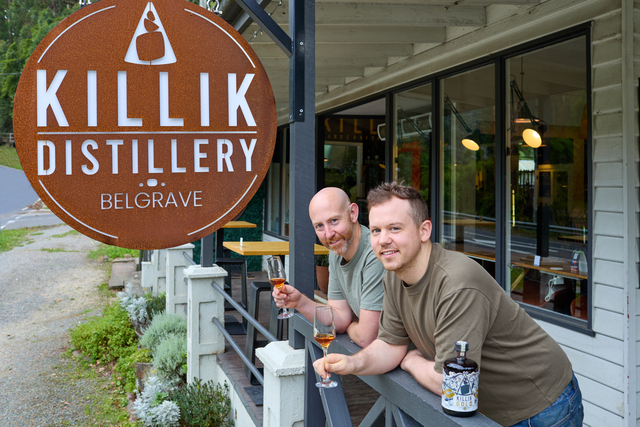The planning process to clear debris within two bushfire moderation zones in the Dandenong Ranges National Park is now complete, the Department of Energy, Environment and Climate Action (DEECA) has confirmed.
Debris in two earmarked zones – one near the Silvan Dam and the other south near Fern Gully Track – is set to be cleared by VicForests after winter for commercial and community use.
Forest Fire Management Victoria (FFMV) Chief Fire Officer Chris Hardman said FFMV will address the “increased risk” at the two sites by removing the heavy debris from roadsides up to 40 metres off the tracks.
“This action will allow us to resume planned burning at the sites in the future. It will also limit ground disturbance within the park and protect environmental values,” Mr Hardman said.
“This work will enable safe fire fighter access and egress in these areas whilst conducting planned burns or responding to bushfires in the area, and ensure that DEECA can fulfil its obligation to manage bushfire risk in the storm impacted areas of the Dandenong Ranges National Park.”
Conservation groups have raised concerns over DEECA’s operation – labelling it ‘salvage logging’.
“I think the commercial use of logs coming out of a national park for commercial incentive is completely inappropriate and it’s not something the local community expects, and they really want our park estate to be protected,” Southern Dandenongs Landcare Group president Robert Pergl told the Star Mail in January.
It’s understood extra measures have been introduced to mitigate the environmental impact of the works and the risk to standing trees, including the physical marking of exclusion zones and buffers, cordoning off no go zones with coloured tape and the marking of trees to be retained, drainage lines and buffers.
Victorian National Parks Association (VNPA) Parks Protection Advocate Jordan Crook said it is great that VicForests has stepped back their operations to reduce their ecological impact, but it is “disappointing and concerning” that it took community uproar to have the agency consider its impact on the national park.
“Conservation and community groups had a long meeting with the Chief Fire Officer and DEECA representatives and it’s great that they’ve stepped back their operations and scaled them back to reduce their ecological impact,” Mr Crook said.
“But there are still a few concerning aspects of the operations and that is the logs being removed from the national park and with it the habitat, and then damage to remaining upright trees, especially hollow bearing trees that are very important habitat.”
Mr Crook said there is a need to have “a lot more oversight and regulation” to stop damage to the national park and threatened species habitat, for animals including the powerful owl and greater gliders that live in that section of the national park.
“It’s pretty well known that logs aren’t a fire risk, it’s the fine fuels that are a fire risk and fuel bushfires where logs take a lot longer to burn,” he said.
“It’s definitely a case of the tail wagging the dog of the log removal and the selling of the logs…that seems to be the main goal in this operation.”







